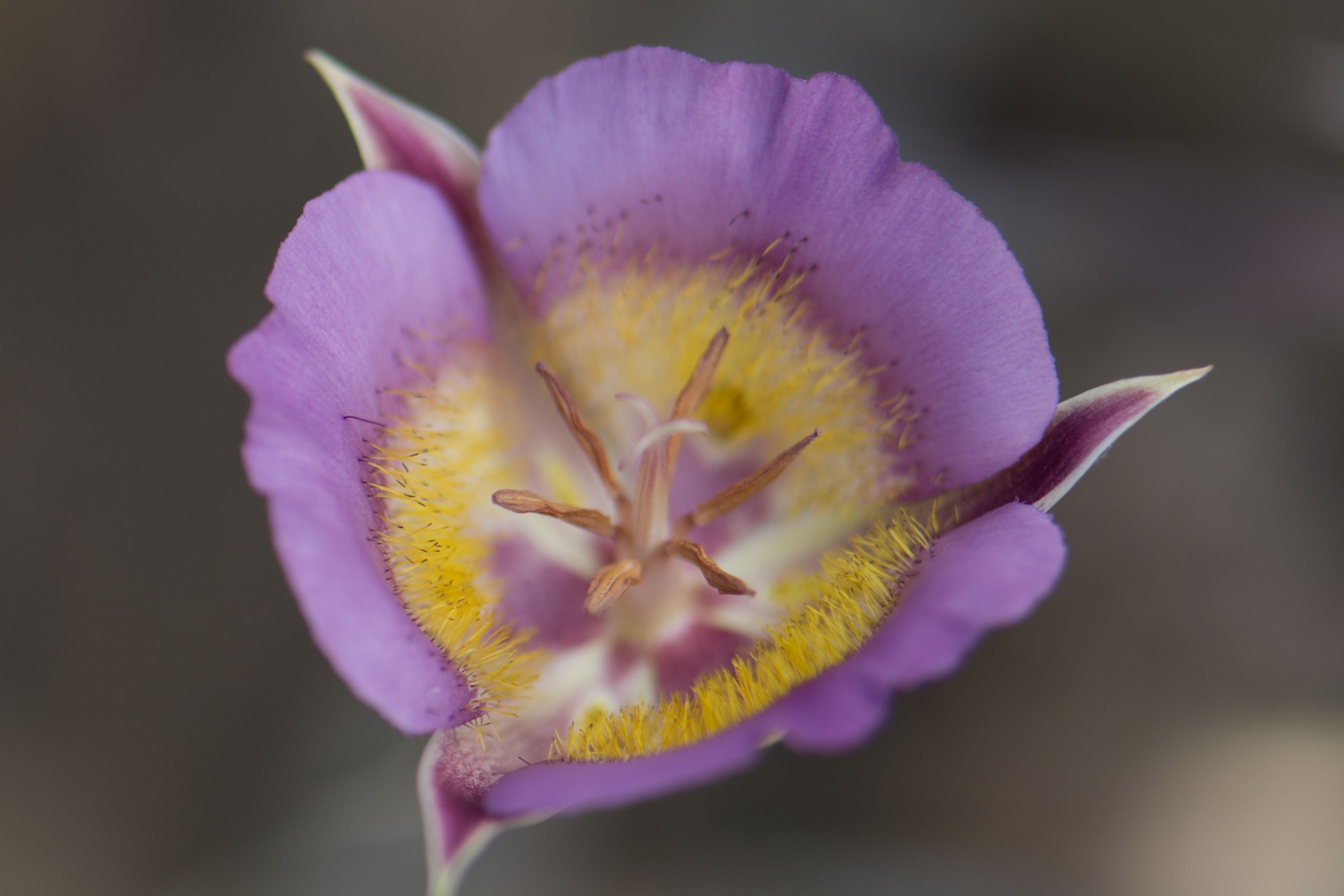Late-blooming mariposa lily
(Calochortus fimbriatus)

Description
Calochortus fimbriatus is a California species of flowering plant in the lily family known by the common name late-blooming mariposa lily. It is native to the coastal mountain ranges of southern Monterey, San Luis Obispo, Santa Barbara and northern Ventura counties, where it is a member of the chaparral flora. This species is listed as "rare, threatened or endangered in California and elsewhere" and "fairly endangered in California" (CNPS: 1B.2). Calochortus fimbriatus is a bulb-forming perennial herb producing a slender, branching stem 30 to 110 centimeters tall. There is a basal leaf up to 40 centimeters long which appears in January and withers long before the plant blooms in late June or early July. The bloom continues until mid-August. The inflorescence consists of 2 to 6 erect, bowl-shaped flowers. Each flower has three narrow sepals and three wider petals. The petals are usually tan or cream colored on the outside and yellowish on the inside with variable number of flecks of dark purple, and a coating of hairs on the inner surface and top rim. The fruit is a three-angled capsule. Calochortus fimbriatus blooms more vigorously the year after a wildfire. Calochortus is a genus of flowering plants in the lily family. The group includes herbaceous, perennial and bulbous species, all native to North America (primarily the Western United States). The genus Calochortus includes mariposas (or mariposa lilies) with open wedge-shaped petals, globe lilies and fairy lanterns with globe-shaped flowers, and cat's ears and star tulips with erect pointed petals. The word Calochortus is derived from Greek and means "beautiful grass". Calochortus flowers have six tepals. Unlike most other Liliaceae, Calochortus tepals are in two series that differ in size and color. The outer three are generally narrower and more sepal-like, while the inner three are larger, usually with bright marks at the base. They may be described as petals. The flowers are borne on a stem that arises from a bulb, generally in the spring or early summer. Flowers can be white, yellow, pink, purple, bluish, or streaked. The insides of the petals are often very 'hairy'. These hairs, along with the nectaries, are often used in distinguishing species from each other.
Taxonomic tree:







